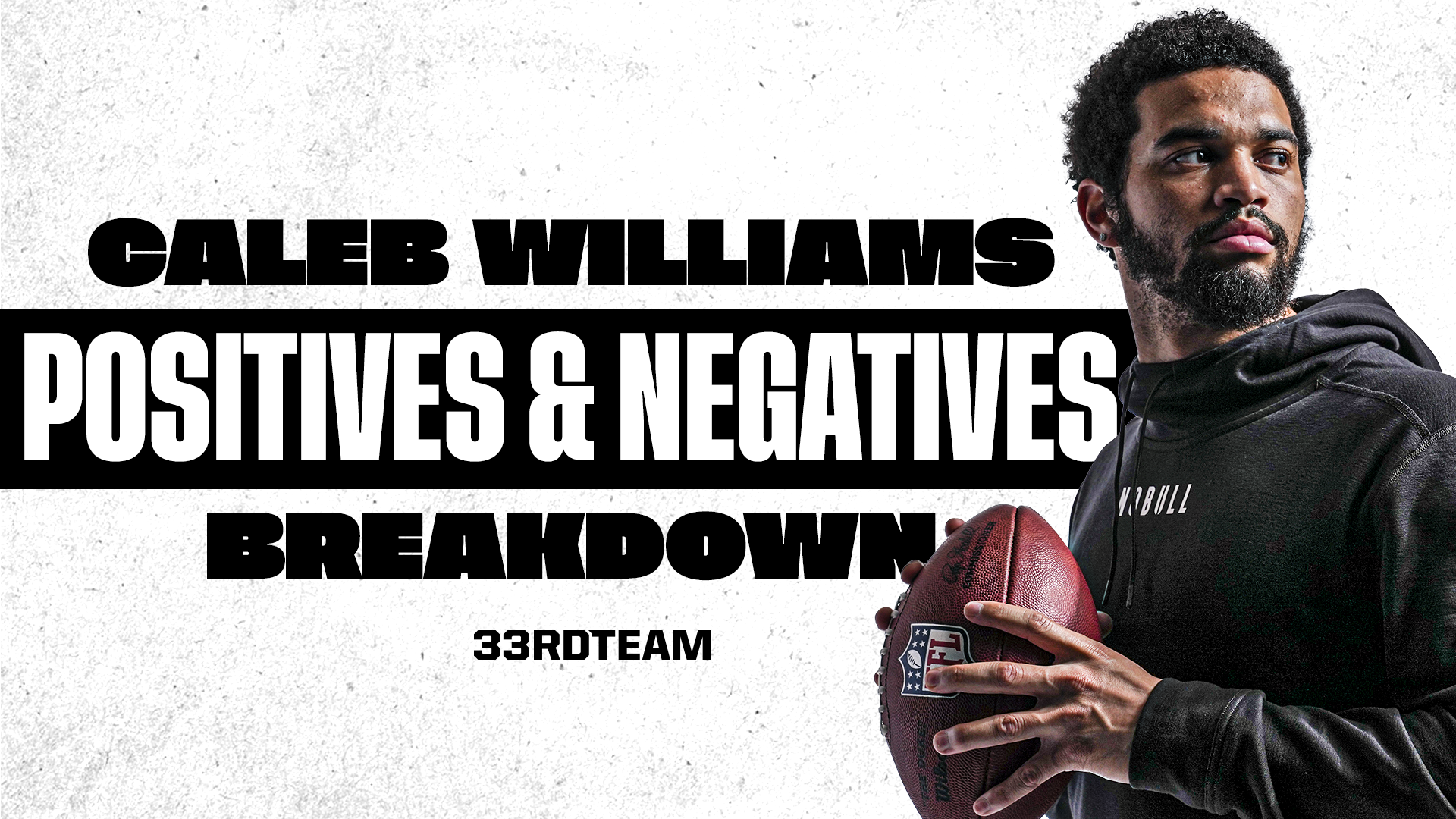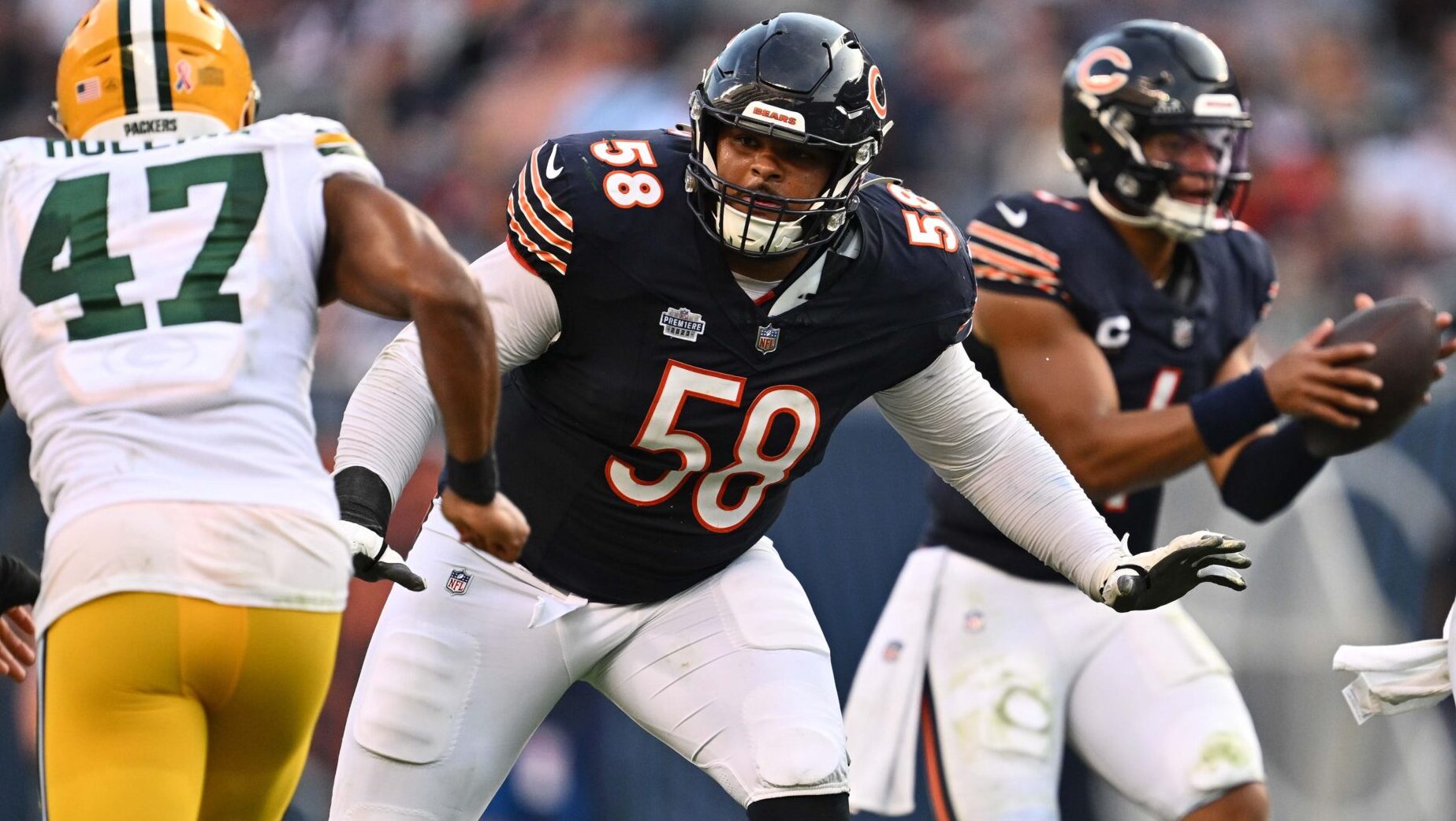Breakdowns
11/23/21
6 min read
The Urgency Meter: Redefining the 4th Down Decision Making Process

There has been a growing debate as analytics continues to play a bigger role in the modern game surrounding the question, "What should be done on 4th down?" With coaches appearing to get more aggressive than ever on 4th down, it can split any room right down the middle.
A simple metric such as “They have converted 2 out of 5 fourth downs on the season” should not suffice anymore in terms of being the sole reason a team makes their decision.
So what should teams be considering?
Here at The 33rd Team, we have decided to build our own advanced algorithm, The Urgency Meter, that uses an assortment of different data points to inform the team as to what they should do on 4th down.
These data points are as follows:
- What is the current score of the game?
- What is the probability of getting a first down?
- What is the probability of scoring a field goal?
- If they get the first down, now what is the probability that they score?
- If they fail on getting the first down, what is the probability of the opposition scoring?
- How many more possessions can they expect to get for the rest of the game, and what is their expected points total from those possessions?
- How many more possessions can the opposition expect to get for the rest of the game, and what is their expected points total from those possessions?
Let’s break this out into two components. First, we will highlight the two elements that we believe can be taken into account pretty well on the spot. Second, we will look at the additional elements that are difficult for a coach to fully compute in the short time they have between downs.
The model we have built utilizes all of these components and the data that sits beneath them in order to make the best decision possible for a team:
Current Elements:
- What is the current score of the game?
The current score has a direct impact on the decision and is largely intuitive as to why, and hence does not need much explaining. The general thinking of the algorithm is that the further behind a team is, the greater the need will be to go for it on 4th down and vice versa.
- What is the probability of getting the first down?
This is the original “algorithm” coaches would run through their head when deciding whether or not to go for it. “How likely is it to make up the yards necessary for the first down?”
Additional Elements:
- If they get the first down, now what’s the probability that they score?
It is not enough to consider only making the first down. The events for the rest of the drive must be considered also. Should a team go for it near their own 20 yard line, they may still have 80 yards to go before they get a touchdown
It may be the case here that the risk of them failing the 4th down attempt is too great.
For this variable on its own, the team must have a strong likelihood of scoring after the first down in order to make the risk worth it.
- What is the probability of scoring a field goal?
This variable needs to be used in conjunction mainly with the variable above. The expected points of taking the field goal are calculated and compared to the expected point of securing the first down and then scoring from then on.
- If they fail on getting the first down, what’s the probability of the opposition scoring?
Here we calculate the expected points total of the opposition's drive should they get to take over on downs. This is essentially the question of “how big is the punishment” should they fail to convert.
- How many more possessions can they expect to get for the rest of the game and what is their expected points total from those possessions?
This is a key component to the decision as teams need to know how severe are the consequences of failing the drive. Will they get another go to earn the points they may need? If so, how many more drives will they get and how many points can they expect by the end of the game.
This variable operates under the assumption that if you are a better team than your opponent, getting more possessions allows a greater element of risk taking when it comes to early 4th down decisions.
Think of Tiger Woods in his prime going for the pin on the first hole as he has 17 more to go to eradicate any possible mistakes. If you need a par on the 18th at Augusta to win the masters, you’re going to play your iron to the middle of the green.
This is the variable that calculates the total expected points for the rest of the game and gives better teams a greater allowance to take risks should they have enough possessions remaining to overcome any potential punishment.
- How many more possessions can the opposition expect to get for the rest of the game and what is their expected points total from those possessions?
If a team is down by 7 points with 10 minutes to go and they have a 4th down decision, they may consider that they should get two more possessions and can realistically expect to come away with 7 points total. This would tie the score.
However, they also of course need to consider how many possessions their opposition will also have and how many points they may come away with here.
How do they Work Together?
The last 6 components of the algorithm are routinely combined with the current score of the game at the time of the decision.
The (current score) + (current team’s expected points total) - (opposition team’s expected points total) = expected points total for the game.
This expected points total is then computed into a function that outputs a score between 0-100% on the urgency a team has to go for it on 4th down.
This model will be used to analyze the 4th down decisions teams are making on a weekly basis and could assist a team in optimizing their decision making process.








